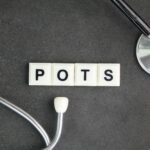Water is the medium of life, and hydration is the process that keeps that medium available where it’s needed most. Inside every cell, fluid allows enzymes to fold, nutrients to dissolve, and electrical signals to pass cleanly. Between cells, circulating plasma ferries oxygen in and carbon dioxide out, while lymph pulls waste toward filters and back again. When fluid balance becomes imbalanced, the body begins triaging—diverting water toward vital organs and away from the skin, joints, and digestive system—so what seems like a simple dry mouth can ripple into fatigue, foggy thinking, and sluggish recovery.
Hydration and Your Brain’s Performance
Your heart depends on an adequate circulating volume to deliver oxygen with each beat. When fluid levels fall, the blood becomes relatively thicker, the heart works harder to pump it, and blood pressure control becomes irregular. This is why standing up quickly can make you dizzy on dry days—the system lacks the easy elasticity that normal volume provides. Rehydrating restores stroke volume, eases heart rate, and helps the entire network return to smooth, efficient flow.
Attention Loves Balance
Small drops in body water can sap working memory and make multitasking crumble.
Mood Tracks Fluids
Irritability and low motivation frequently improve once steady sipping resumes.
Hydration and Cardiovascular Stability
Your heart depends on adequate circulating volume to deliver oxygen with each beat. When fluid levels fall, the blood gets relatively thicker, the heart works harder to move it, and blood pressure control becomes choppy. This is why standing up quickly can make you dizzy on dry days—the system lacks the easy elasticity that normal volume provides. Rehydrating restores stroke volume, eases heart rate, and helps the entire network return to smooth, efficient flow.
Kidney Function and Detox With Proper Hydration
The kidneys are the body’s precision filters, and they require a steady fluid supply to remove toxins effectively. Too little intake can concentrate urine, which can encourage the formation of mineral crystals and irritate delicate tissue. Adequate drinking dilutes solutes, keeps urine flowing, and reduces the odds of stone formation while sparing the kidneys unnecessary strain. Good fluid balance also supports normal blood pressure regulation, since the kidneys help control sodium and water retention.
Filtration Needs Flow
A robust stream of urine helps waste products leave before they crystallize.
Stones Prefer Stagnation
Concentrated urine creates a friendlier environment for crystals to grow.
Hydration in Digestion and Nutrient Transport
Saliva begins digestion by moistening food and launching enzymes that break down starches, and gastric secretions depend on available water to dissolve and mobilize nutrients. In the intestines, fluid softens stool and supports regular movement, which is why low intake often shows up as constipation. Beyond the gut, the bloodstream transports vitamins, minerals, amino acids, and glucose to every corner of the body—work that simply runs better when fluids are sufficient and consistent.
Fluids Ease The Journey
Moist, well-lubricated contents move through the GI tract without strain.
Absorption Loves Solution
Nutrients need a watery medium to cross from the gut to the blood efficiently.
Hydration and Temperature Regulation During Heat and Exercise
Sweating is your built-in air conditioning, but it only works if there’s fluid to sweat. As sweat evaporates, it pulls heat from the skin and cools the core temperature. Without sufficient intake, you sweat less, overheat sooner, and your performance drops because the heart must work harder to compensate. Replacing both water and electrolytes during longer efforts keeps cooling effective and helps muscles fire predictably, rather than cramping under stress.
Evaporation Is The Engine
Heat leaves the body when sweat can actually evaporate from the skin.
Electrolytes Keep Signals Clear
Sodium and potassium help nerves and muscles coordinate under load.
Skin, Joints, and Connective Tissue Interactions With Hydration
The glow people chase from serums starts deeper than the epidermis. Well-hydrated tissue supports a plumper, more elastic skin barrier that appears smoother and recovers more quickly after stress. Inside joints, synovial fluid reduces friction, allowing cartilage to glide with minimal wear. Tendons and ligaments rely on fluid to maintain their spring and to exchange nutrients in areas with limited direct blood supply. When intake lags, the body guards core functions first, and these peripheral systems often show the earliest signs of dryness and stiffness.
Synovial Fluid is Slip
Plenty of joint fluid reduces grinding and extends comfort during activity.
The Barrier Needs a Bath
Good internal fluid balance helps the skin hold moisture on the outside.
Hydration and Immune Resilience
Immune cells travel in lymph and blood, and both depend on fluid to circulate freely. Mucous membranes in the nose and throat are most effective at trapping invaders when they’re moist rather than dry. Proper fluid balance also supports the movement of waste products from inflamed tissues into the lymphatic system. This doesn’t make you invincible, but it improves the terrain where defenses operate, especially during seasonal surges of colds and allergies.

Volume and Practical Strategies for Hydration Timing
Chugging a large bottle once a day won’t deliver the steady supply your physiology prefers. Spreading intake across waking hours supports stable circulation, clearer thinking, and even energy. Foods with high water content—fruits, vegetables, broths—contribute meaningfully, and pairing water with meals can aid digestion. A baseline rhythm matters more than hitting a perfect number, because consistent intake lets your systems relax into their work.
Morning Anchor
Starting the day with a glass gives every system a head start.
Steady Sips Win
Regular, moderate drinking keeps energy and focus more even.
Pair Fluids With Habits
Linking sips to routines—emails, meetings, commutes—builds consistency.
Hydration Myths and Real-World Adjustments
You don’t need a one-size-fits-all rule because needs shift with size, climate, activity, and diet. Darker urine often signals the need for more fluids, while very pale urine all day may mean you’re overshooting without electrolytes. Coffee and tea are a significant source of intake for most people, and during long, sweaty activities, a pinch of salt with water or a balanced electrolyte drink can help improve hydration. A practical plan evolves with your life, rather than forcing your life to match a rigid target.
Forget the Magical Number
Body size, weather, and movement matter far more than a universal quota.
Color is a Clue
Urine that consistently appears dark may indicate that you need to increase your fluid intake.
Yes, Coffee Counts
Moderate caffeine beverages still add to daily totals for most adults.
Hydration For Special Populations and Life Stages
Older adults often feel less thirsty even when they need fluid, and medications can alter water and electrolyte balance. Symptoms of chronic conditions can be worsened without proper hydration. Children move constantly and sweat easily, but may forget to drink unless prompted. During pregnancy and breastfeeding, demands rise as blood volume expands and milk production draws on reserves. Athletes, outdoor workers, and individuals in hot environments should plan their intake proactively, as waiting for thirst can lag behind their actual needs. Tailoring fluid strategies for these groups goes a long way toward steady energy and safer days.
Support Older Adults
Regular reminders and easy access help compensate for blunted thirst.
Guide Kids to Pause
Scheduled drink breaks protect players from overheating.
Mental Health Connection to Hydration
The mind and body are not separate entities, and fluid balance proves it. Persistent low intake can heighten perceptions of stress, flatten mood, and make problems seem larger than they are, as attention and working memory are strained. Reestablishing steady intake supports sleep quality, reduces the tiny, nagging headaches that erode patience, and creates a foundation on which therapy, mindfulness, and daily coping skills can work better. It’s a modest lever with surprisingly broad reach.
When To Seek Help During Extreme Hydration Deficits
Severe thirst with scant urine, dizziness that worsens on standing, rapid heartbeat, confusion, or an inability to keep fluids down are reasons to seek medical attention. On the flip side, excessive water without electrolytes can dilute sodium and lead to headaches, nausea, cramps, or in extreme cases, dangerous confusion. Listening to your body’s signals—and acting on them early—prevents slight imbalances from becoming risky episodes.
Know The Danger Signs
Escalating dizziness, fainting, or persistent vomiting warrant prompt care.
Balance Matters Both Ways
Overdoing plain water can be as problematic as too little.

Hydration In Movement Recovery And Performance
Whether you’re walking the neighborhood or training hard, fluid balance shapes how well you perform and rebound. Adequate intake maintains blood flow to working muscles, supports oxygen delivery, and helps clear metabolic byproducts that contribute to soreness. After activity, restoring fluids and electrolytes helps the body reestablish normal circulation and rehydrate tissues so repair processes can run at full strength. Small, consistent habits before, during, and after movement make the difference between dragging through sessions and finishing strong.
Prehydrate for Ease
Arriving at workouts already topped off reduces early fatigue.
Rehydrate to Repair
Post-activity fluids speed the return to normal and set up the next effort.
The Hormonal Terrain and Hydration
Fluid status interacts with hormones that steer blood pressure, stress response, and metabolism. When intake drops, the body releases signals that conserve water and can temporarily raise blood pressure. Adequate fluid allows those systems to relax, reducing unnecessary strain and smoothing daily swings. Over longer arcs—menstrual cycles, perimenopause, high-stress seasons—supporting fluid intake can help keep sleep, mood, and energy steadier while bigger adjustments settle.
Hydration as a Daily Practice for Energy and Longevity
There’s no glamour in a glass of water, but there’s a lot of biology in it. Maintaining fluid balance allows every system—nervous, cardiovascular, renal, digestive, musculoskeletal, and immune—to operate in the zone where it evolved to function optimally. You’ll think a little clearer, move a little easier, and bounce back a little faster when fluid is not a limiting factor. Pair a reachable bottle with your routines, let foods with high water content do some quiet lifting, and adjust for weather and activity as needed. Over months and years, those small choices compound into better days and a more resilient body.
Visit The Steady Path blog to learn more about proper hydration and its impact on your overall health.



